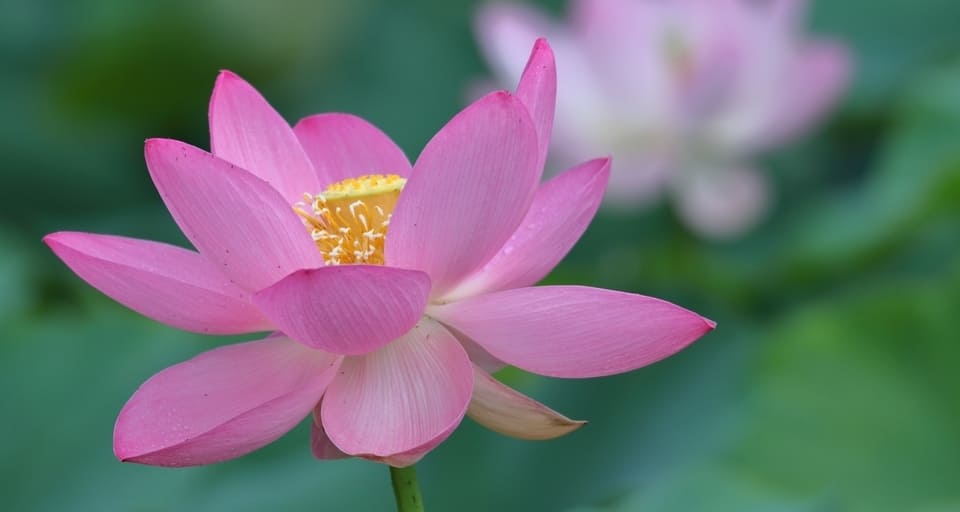Lotus flowers, renowned for their breathtaking beauty and deep cultural significance, have captivated the hearts of people around the world for centuries. These exquisite aquatic plants are not only admired for their aesthetics but also carry profound symbolism in various cultures. In this comprehensive exploration, we will delve into the enchanting world of lotus flowers and uncover the secrets of where they grow.
The Botanical Marvel of Lotus Flowers
Lotus flowers, scientifically classified as Nelumbo nucifera, belong to the family Nelumbonaceae. They are known for their unique growth pattern, which sets them apart from other aquatic flora. Lotus plants are perennial, meaning they can survive and thrive for many years. Their remarkable adaptation to aquatic environments is a testament to the wonders of nature.
Habitat and Geographic Distribution
Lotus flowers are native to regions of Asia, where they have flourished for thousands of years. These delicate blooms can be found in various countries, including:
- India: Lotus flowers are revered in India and are often associated with spirituality and purity. They can be found in freshwater bodies such as ponds, lakes, and slow-moving rivers.
- China: The lotus is the national flower of China and holds deep cultural significance. It thrives in the country’s extensive network of waterways, from serene ponds to vast lakes.
- Vietnam: In Vietnam, lotus flowers are a symbol of elegance and resilience. They are commonly found in the Mekong Delta and other wetland areas.
- Egypt: Ancient Egypt also boasts a historical connection to lotus flowers, which grow in the fertile banks of the Nile River.
- North America: Lotus flowers have been introduced to North America and can be spotted in regions with suitable climates, including the southern United States.
The Ideal Lotus Habitat
Lotus flowers have a preference for tranquil, shallow waters with plenty of sunlight. They thrive in mud or clay-bottomed ponds and lakes, where their long stems can easily reach the surface. The gentle movement of water aids in the pollination process, making these aquatic environments perfect for lotus growth.
The Enigmatic Growth Cycle
Understanding the growth cycle of lotus flowers is key to appreciating their allure. These plants undergo a fascinating transformation throughout the year, each stage representing something unique and beautiful.
Seed Germination
The journey of a lotus flower begins with a humble seed. These seeds can lay dormant for years, waiting for the right conditions to germinate. Once submerged in water, the lotus seeds awaken from their slumber and begin to sprout.
Leaf Emergence
As the lotus plant grows, it sends out its iconic circular leaves. These leaves, which can measure up to two feet in diameter, float gracefully on the water’s surface. They are not only visually striking but also serve a vital role in providing shade and protection to the lotus flowers below.
Flower Bloom
The most captivating moment in the lotus’s life cycle is undoubtedly the blooming of its resplendent flowers. Lotus flowers typically bloom during the day, and their petals can be white, pink, or even red. Their fragrance is delicate and alluring, making them a magnet for pollinators like bees and butterflies.
Seed Pod Formation
After the lotus flower has been pollinated, it begins to form a distinctive seed pod. This pod, often referred to as the lotus fruit or seed head, contains the next generation of lotus seeds. As the pod matures, it gradually bends downward into the water, allowing the seeds to disperse when it eventually breaks open.
The Cultural Significance of Lotus Flowers
Beyond their botanical marvel, lotus flowers hold deep cultural and spiritual significance in many societies around the world. Let’s explore some of the ways in which lotus flowers are revered:
Hinduism and Buddhism
In Hinduism and Buddhism, the lotus flower symbolizes purity, enlightenment, and the journey of the soul. It is often associated with deities and is a common motif in temple art and architecture.
Ancient Egypt
The ancient Egyptians considered the lotus as a symbol of rebirth and creation. It was associated with the sun god Ra and was believed to have healing properties.
Chinese Culture
In Chinese culture, the lotus represents beauty, grace, and elegance. It is also a symbol of purity and spiritual enlightenment. The lotus plays a prominent role in traditional Chinese art, literature, and folklore.
Conclusion
The question, “Where do lotus flowers grow?” reveals a fascinating journey through the natural world and cultural symbolism. These extraordinary aquatic plants thrive in diverse regions, from the tranquil waters of Asia to the ancient banks of the Nile. Their growth cycle, marked by the emergence of leaves, exquisite blooms, and the formation of seed pods, is a testament to the wonders of nature.
Beyond their botanical marvel, lotus flowers carry deep cultural significance in Hinduism, Buddhism, Ancient Egypt, and Chinese culture. They serve as a reminder of purity, enlightenment, and the eternal cycle of life.
As we conclude this exploration of lotus flowers, it’s clear that these aquatic marvels are not just beautiful to behold but also rich in symbolism and history. Whether in a serene pond or a bustling city, the lotus continues to captivate hearts and minds, making it a truly remarkable and enduring symbol of beauty and spirituality.






